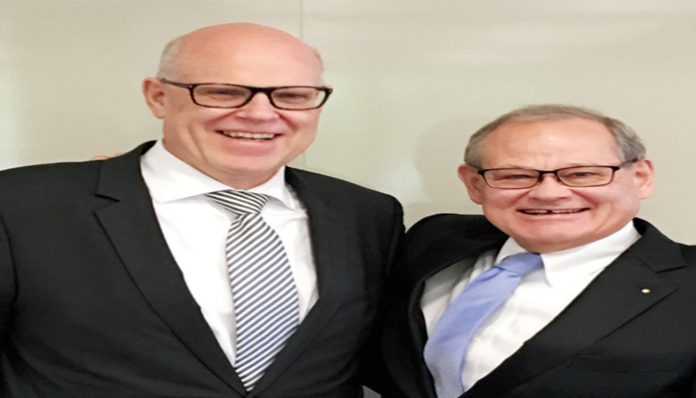
Heidelberg’s new chief executive Rainer Hundsdörfer, who joined the company six months ago, said that after a rough patch the company was essentially back on track with improved financial results in the final quarter of the last financial year. Speaking at a round-table meeting at interpack, Hundsdörfer said that the company’s Q4 of 2016-17 was its best since 2008, while explaining that the company had maintained its research and development budget even in the past several years of stress. Also at the meeting was Ferdinand Reusch, managing director of Heidelberg’s subsidiary Gallus and the largest private, and perhaps most active and visible, shareholder in Heidelberg Druckmaschinen.
Hundsdörfer added, “Heidelberg has one of the best opportunities to become better in digital and create new business models; models that are not possible without digitisation. In the future, Heidelberg has to become a digital company more than a machinery one.” His candid take on automation asserted that the “digital transformation of industry actually began in the 1980s, and it is a bit of a marketing job to call it Industry 4.0.” Print needs to encompass a larger sphere, “It’s not digital print but digital business,” he asserted.
Another Hundsdörfer insight that will likely resonate with the Indian print industry is, “Digital will take a greater part of printing not just because of short runs, but mainly because digital doesn’t depend on highly skilled persons—[it’s] not just the cost, but digital is independent of the quality or the qualification of the operator.”
The company’s digital press portfolio includes the Labelfire and Primefire systems that it manufactures in collaboration with Fujifilm’s Dimatix ink jet arrays as well as its 4D ink jet system for printing on 3-dimensional objects. It also sells Ricoh digital presses under it own branding and increasingly with its own front-end technology as well as its own manufactured offset presses and prepress technology. The company has divested its binding equipment to Muller Martini and its diecutting technology to Chinese manufacturer Masterwork even as it sees the folding cartons driving the offset sheetfed market and as much as 30% of its own sales.
 “Folding cartons and labels is driving our growth,” said Hundsdörfer. “More automated processes are also very important. The technology is young although the quality is already there. When it comes to cost of productivity, there is room to grow.” Heidelberg also revealed that it was engaged with brand owners to boost the digital market. “When we develop something new then we must make sure the customers of our customers need it,” said Hundsdörfer.
“Folding cartons and labels is driving our growth,” said Hundsdörfer. “More automated processes are also very important. The technology is young although the quality is already there. When it comes to cost of productivity, there is room to grow.” Heidelberg also revealed that it was engaged with brand owners to boost the digital market. “When we develop something new then we must make sure the customers of our customers need it,” said Hundsdörfer.
Editors note: Our live coverage of Metpack and interpack by Ron Augustin, Shardul Sharma and Naresh Khanna will appear in the print and eMagazine versions of the June issue of Packaging South Asia dated 7 June 2017, which goes to press on 30 May 2017. Editorial inputs and advertising queries for both web and print channels can be sent to interpackreview@ippgroup.in.











